-
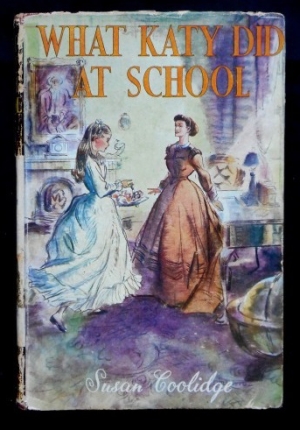 Book II in the Katy series. Dr. Carr's mind is firmly made up. Katy and her little sister Clover are to spend a year away at boarding school. A strange place and far from home, but on arrival the girls have an inkling that it might turn out to be rather different from their expectations. One thing is for sure, it certainly isn't going to be dull with Rose Red as an ally.
Book II in the Katy series. Dr. Carr's mind is firmly made up. Katy and her little sister Clover are to spend a year away at boarding school. A strange place and far from home, but on arrival the girls have an inkling that it might turn out to be rather different from their expectations. One thing is for sure, it certainly isn't going to be dull with Rose Red as an ally. -
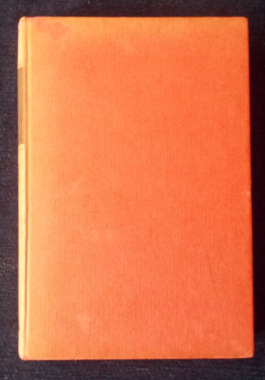
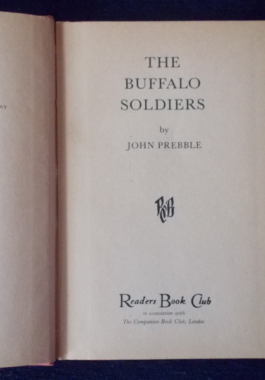
Lietenant Garrett Byrne has just recently been promoted to take command of a squad of black soldiers. Irish-born and no-nonsense, he clashes frequently with his second-in-command, and struggles with his feelings over being placed in charge of such a squad. His troop is assigned the duty of guiding and protecting a band of reservation Comanches who want to hunt buffalo. Along the way, they encounter hide hunters, a white homestead family with a mother and two small children, and a band of Indian-hunting Texas Rangers. It's a volatile mix was the journey becomes a grim tale of chase and survival amid racial hatred and violence.
-
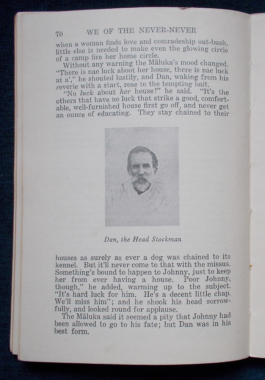
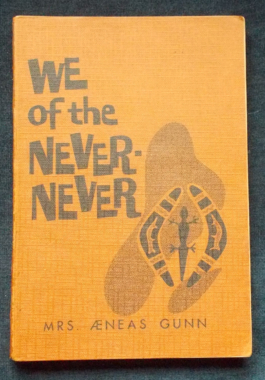 In 1902, newly-married Jeannie Gunn (Mrs Aeneas Gunn) left the security and comfort of her Melbourne home to travel to the depths of the Northern Territory, where her husband had been appointed manager of ‘The Elsey’, a large cattle station. One of the very few white women in the area, she was at first resented by people on and around the station, till her warmth and spirit won their affection and respect. She had an unerring ear and eye for the sounds and sights of the country, and this is her moving and simple account of her life amidst the beauty and cruelty of the land, and the isolation and loneliness - together with the comradeship and kindness of those around her. Abridged and adapted school edition. Angus and Roberson,1962. Photo illustrations.
In 1902, newly-married Jeannie Gunn (Mrs Aeneas Gunn) left the security and comfort of her Melbourne home to travel to the depths of the Northern Territory, where her husband had been appointed manager of ‘The Elsey’, a large cattle station. One of the very few white women in the area, she was at first resented by people on and around the station, till her warmth and spirit won their affection and respect. She had an unerring ear and eye for the sounds and sights of the country, and this is her moving and simple account of her life amidst the beauty and cruelty of the land, and the isolation and loneliness - together with the comradeship and kindness of those around her. Abridged and adapted school edition. Angus and Roberson,1962. Photo illustrations. -

Final Exits: Michael Largo
$10.00Death walks behind us and it's anywhere. This book is a cross between the Darwin Awards and actual statistics dealing with the way we die, from the absurd to the tragic. Categories include: Bed and breakfast establishments; old fridges; stowaways; stampedes; hiccoughs; and some very surreal events involving office photocopiers. There is also coverage of burial customs, famous last words and more than 400 black and white photographs and illustrations. -


This mystery thriller written at the turn of the century begins thus: "Two o’clock - two o’clock in the morning. The bells had just chimed the hour. Big Ben had boomed forth its deep and solemn note over sleeping London. The patient constable on point-duty at the foot of Westminster Bridge had stamped his feet for the last time, and had been relieved by his colleague, who gave him the usual pass-word, “All right.” The tumultuous roar of traffic, surging, beating, pulsating, had long ago ceased, but the crowd of smart broughams and private hansoms still stood in New Palace Yard, while from the summit of St. Stephen’s tower the long ray of electricity streamed westward, showing that the House of Commons was still sitting. The giant Metropolis, the throbbing heart of the greatest empire the world has known, was silent. London, the city of varying moods, as easily pleased, as easily offended as a petted child; London, the dear, smoke-blackened old city, which every Englishman loves and every foreigner admires; London, that complex centre of the universe, humdrum and prosaic, yet ever mysterious, poetic and wonderful, the city full of the heart’s secrets and of life’s tragedies, slept calmly and in peace while her legislators discussed and decided the policy of the Empire. The long rows of light on the deserted terrace and along the opposite shore in front of St. Thomas’s Hospital threw their shimmering reflection upon the black waters of the Thames; the cold wind swept roughly up the river, causing the gas-jets to flicker, so that the few shivering outcasts who had taken refuge on the steps of the closed doorway of Westminster Station, murmured as they pulled their rags more tightly round them. Only the low rumbling of a country wagon bearing vegetables to Covent Garden, or the sharp clip-clap of a cab-horse’s feet upon the asphalt, broke the quiet. Except for these occasional disturbances all else was as silent on that dark and cloudy night in late October as if the world were dead."
-
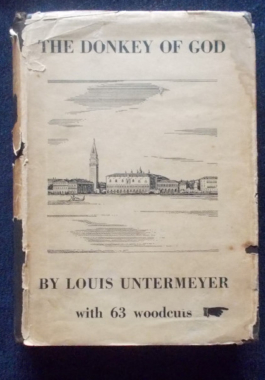 This is no ordinary 'Guide to Italy' - this is a collection of charming legends, tales and anecdotes created by the author and inspired by the regions of Italy. Naples - The Castle That Came Out Of An Egg; Sorrento, Almalfi, Pompeii - The Dog Of Pompeii; Ravello, Salerno, Paestum - The Temple Boy; The Hill Towns - Orvieto, Prugia, Assissi - The Donkey Of God; Gubbio, San Gimignano, Siena - The Horse of Siena; Florence - The Painted Death; Venice - Daughter of the Lion; and Rome - The Holy Cross. Some of the tales are little-known legends, combining history with mystery. The longer stories are pure inventions whose outcome are the observations and experiences of an alert and sensitive traveler. But they are more than that. They are the creations of a poet whose imagination is enriched by humor. With 63 fabulous woodcuts.
This is no ordinary 'Guide to Italy' - this is a collection of charming legends, tales and anecdotes created by the author and inspired by the regions of Italy. Naples - The Castle That Came Out Of An Egg; Sorrento, Almalfi, Pompeii - The Dog Of Pompeii; Ravello, Salerno, Paestum - The Temple Boy; The Hill Towns - Orvieto, Prugia, Assissi - The Donkey Of God; Gubbio, San Gimignano, Siena - The Horse of Siena; Florence - The Painted Death; Venice - Daughter of the Lion; and Rome - The Holy Cross. Some of the tales are little-known legends, combining history with mystery. The longer stories are pure inventions whose outcome are the observations and experiences of an alert and sensitive traveler. But they are more than that. They are the creations of a poet whose imagination is enriched by humor. With 63 fabulous woodcuts. -

In the reign of James II, rejected love turns the exquisite, soulful Anthony Armadale into the grim, misogynistic outlaw Captain Midnight, the terror of the wealthy autocrats who consider themselves above the law. Encouraging him in his daring interventions between tyranny and and its victims, the little parson Aeneas Wade never guesses his identity. But the lovely Lady Clarissa Fane sees through the bitterness to the true man. This was Farnol's last book, finished in rough form before his death and edited for publication by his widow, Mrs. Phyllis Farnol.
-
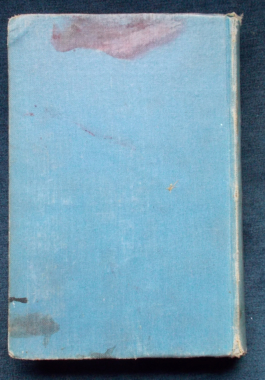
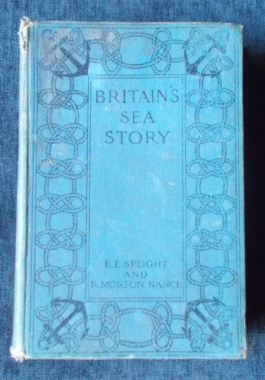 Subtitle: Being the Story of British Heroism in Voyaging and Sea-fight from Alfred's Time to the Battle of Trafalgar. First published in 1905, this anthology was the first one-volume survey of Britain's historic sea voyages and battles. With selections from John Dryden, Samuel Pepys, Sir Walter Raleigh, King Alfred as well as contemporary accounts from documents, letters and eyewitnesses. This history covers the period from 55 B.C. to 1805 A.D. With one colour plate, several glossy black and white plates and sketches.
Subtitle: Being the Story of British Heroism in Voyaging and Sea-fight from Alfred's Time to the Battle of Trafalgar. First published in 1905, this anthology was the first one-volume survey of Britain's historic sea voyages and battles. With selections from John Dryden, Samuel Pepys, Sir Walter Raleigh, King Alfred as well as contemporary accounts from documents, letters and eyewitnesses. This history covers the period from 55 B.C. to 1805 A.D. With one colour plate, several glossy black and white plates and sketches. -
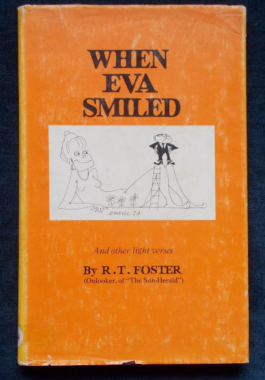
When Eva Smiled: R.T. Foster
$30.00Humorous Australian poetry, often satirising news events of the day: Down To Earth lampoons Professor Auguste Piccard's prediction of future space journeys to distant solar systems lasting thousands of years and from which it would be possible to return without aging. All manner of everyday life events are in the sights of Foster's gun, from the culinary arts to modern sculpture, with a few sly digs at political notables from the Cold War Era. With amusing black and white illustrations by Emeric.


